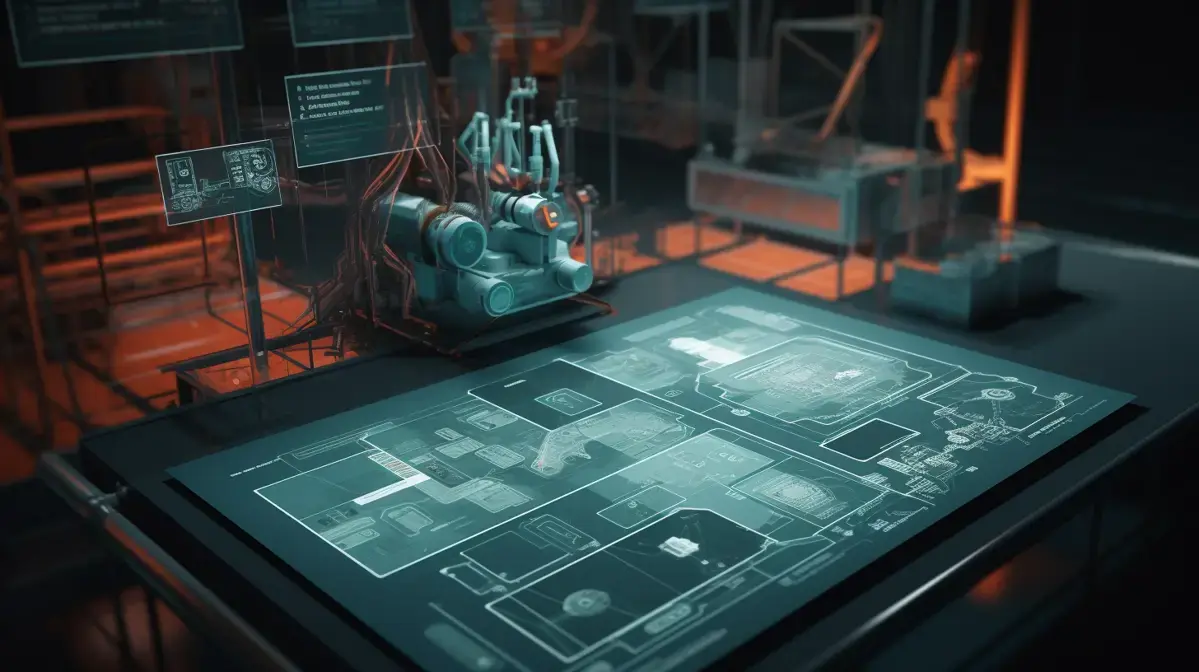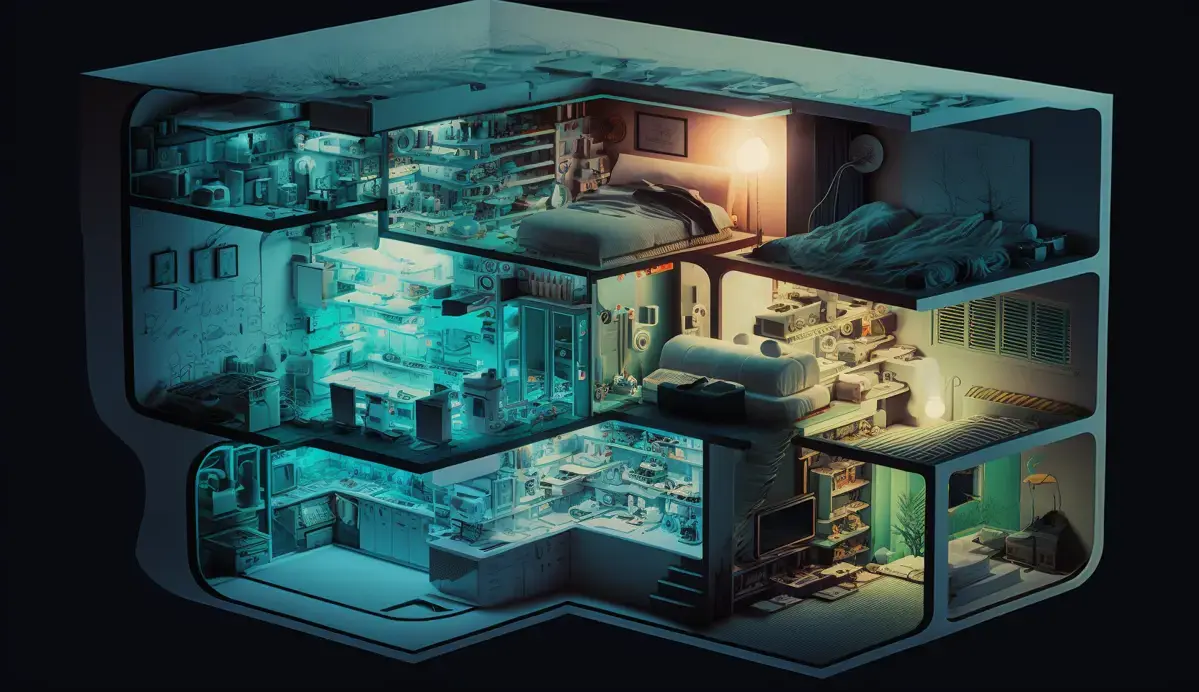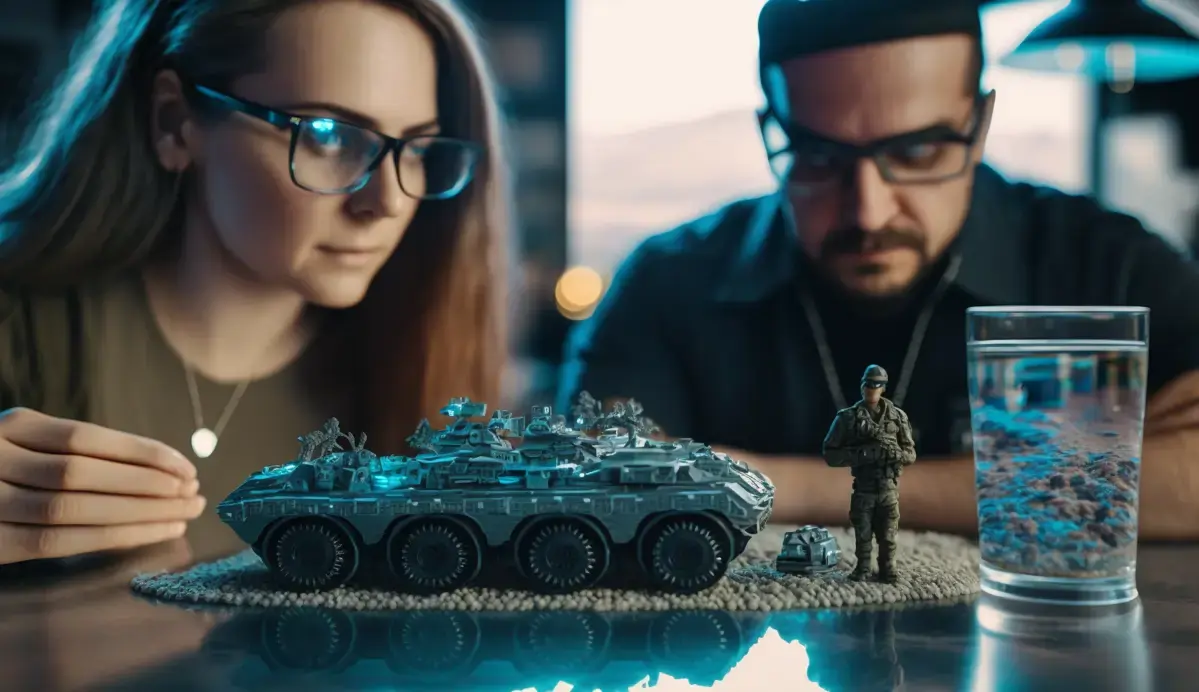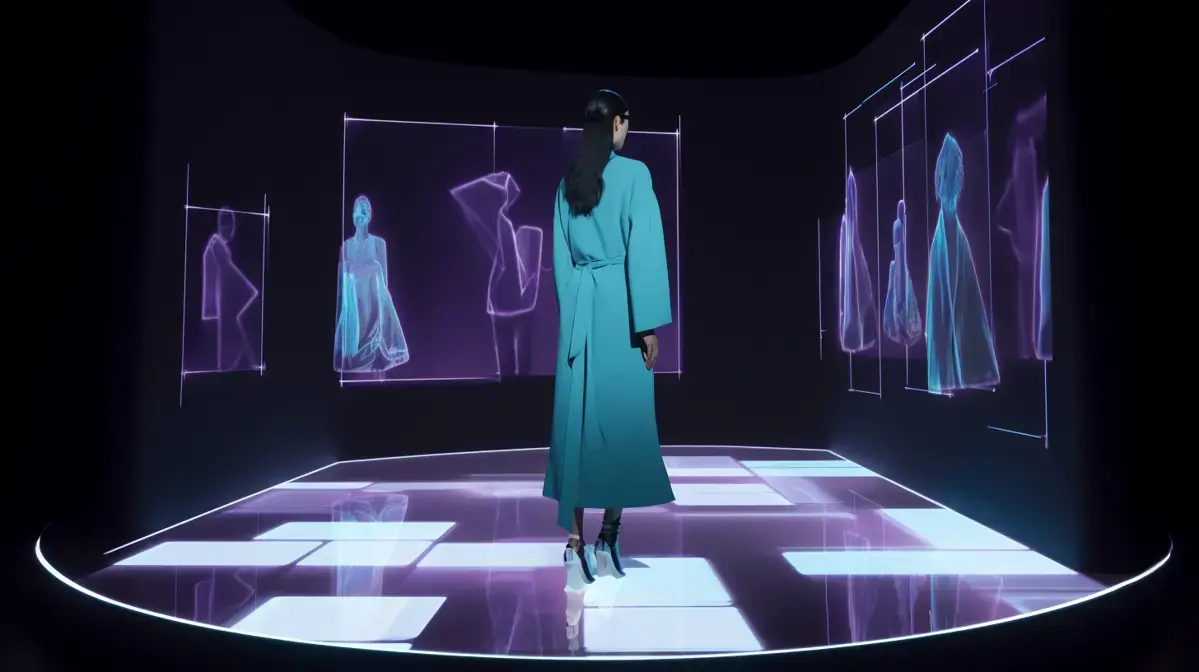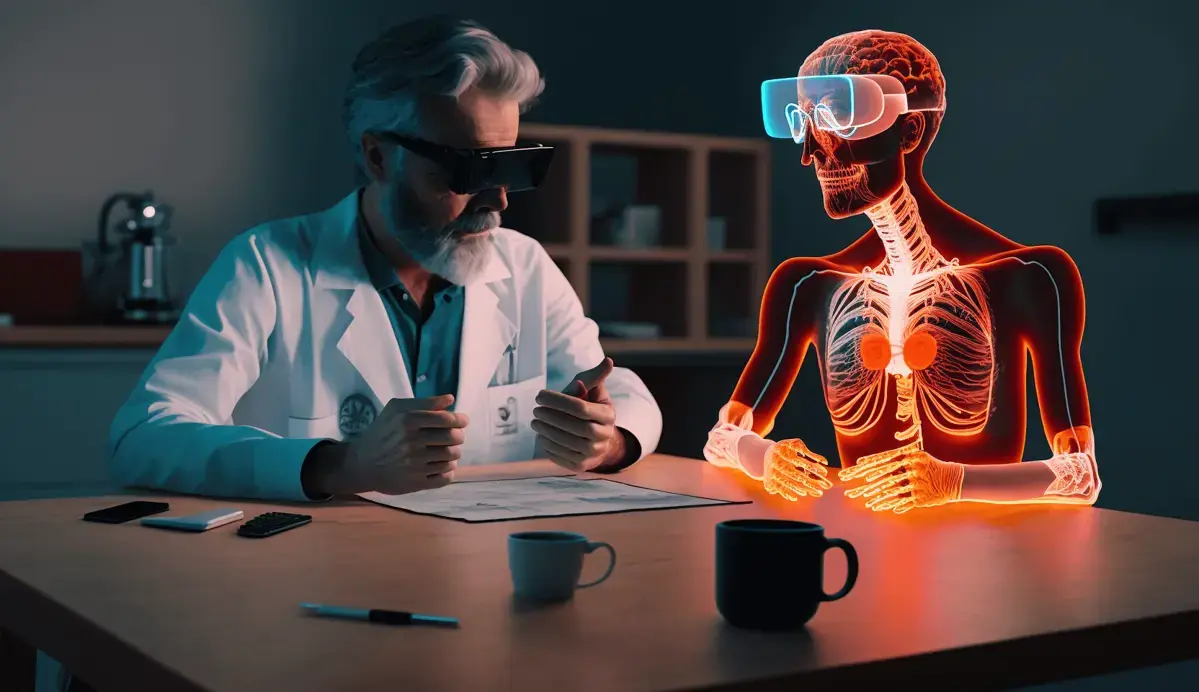The integration of augmented reality (AR) technology is set to revolutionize the way we interact with autonomous vehicles. By overlaying digital information onto the physical environment, AR enhances our perception and understanding of the world around us. In an automotive context, this means drivers can receive real-time feedback on their surroundings and make more informed decisions.
One such application of AR in autonomous vehicles is heads-up displays (HUDs). Rather than having to constantly check instrumentation or look away from the road, drivers can see all essential information projected directly onto their windshield. This includes speed, fuel levels, navigation directions and even potential hazards that may lie ahead.
Another exciting area where AR could be used in self-driving cars is remote assistance. With live video feeds from cameras positioned around a vehicle’s exterior overlaid with diagnostic data provided by its onboard computers via Augmented Reality(https://argeopin.com/augmented-reality/), technicians could remotely diagnose faults quickly and accurately without ever needing to physically inspect it themselves.
Overall, as we move toward a future where driverless cars become commonplace on our roads; augmented reality offers one solution for making this transition smoother while also enhancing safety measures for passengers at large.
Table Of Contents
- Key Points
- Introduction: The Rise of Augmented Reality in Autonomous Vehicles
- Understanding Augmented Reality Technology and its Benefits for Self-Driving Cars
- How Augmented Reality is Enhancing the Safety Features of Autonomous Vehicles
- Interesting Facts
- Real-Time Navigation Assistance with Augmented Reality in Self-Driving Cars
- Revolutionising Passenger Entertainment with Augmented Reality
- Overcoming the Challenges of Integration between AR and Self-Driving Car Technologies
- FAQs
- Future Possibilities: Advancements in AR for Autonomous Vehicle Development
- Concerns and Limitations surrounding the use of AR in self-driving cars
- Conclusion: Driving Forward into a New Era with Augmented Reality Enabled Autonomous Vehicles
- Key Takeaways

Key Points
- Augmented reality (AR) technology enhances the safety and efficiency of autonomous vehicles by providing real-time information to drivers.
- AR head-up displays project relevant information onto the driver’s field of view, reducing distraction and increasing situational awareness.
- The use of AR in autonomous vehicles can also improve navigation, route planning, and communication with other road users.
- This emerging technology has significant potential for enhancing user experience and revolutionising the transportation industry as a whole.
Introduction: The Rise of Augmented Reality in Autonomous Vehicles
Augmented reality has become a significant part of modern-day technology, with many industries integrating it into their operations. One such industry is the automotive sector and specifically, autonomous vehicles. The use of AR in self-driving cars has revolutionized the driving experience and promises to take safety to a whole new level.
For instance, imagine driving down a highway in an autonomous car while wearing an AR headset that displays real-time information about road conditions without ever having to look away from the windshield. This technology enhances situational awareness by superimposing digital images onto physical objects or environments seamlessly.
There are numerous applications for this cutting-edge technology within self-driving cars designed for everything from entertainment and navigation assistance to more complex features like advanced driver-assistance systems (ADAS). In fact, some car manufacturers like BMW have already integrated heads-up displays (HUDs) into select models making augmented reality-based applications accessible today.
Understanding Augmented Reality Technology and its Benefits for Self-Driving Cars
Augmented Reality (AR) technology has been on the rise over the last few years. Its application in areas such as healthcare, gaming and industrial design is well documented. However, its integration into autonomous vehicles is a new frontier that promises to revolutionize the driving experience.
As an AR expert based in England, he has seen firsthand how this technology has transformed cars on our roads. He recalls his first time experiencing AR while testing a self-driving car prototype – “It was like being transported into another world where everything around me came alive with information.”
One of the most exciting developments is that augmented reality can be used to create virtual dashboards and displays within vehicles themselves without having to take your eyes off of what’s happening outside or becoming distracted by other screens or devices inside.
With applications ranging from intuitive route planning overlays through heads-up displays (HUDs), contextual infotainment systems providing real-time situational details about an area you’re driving through, traffic avoidance warnings provided alongside relevant landmarks; it’s no wonder why more car manufacturers are investing heavily in this cutting-edge technology.
The future looks bright for those who integrate AR into their designs because they will undoubtedly experience greater safety features when navigating busy streets while also enjoying enhanced entertainment during long trips across country borders.
How Augmented Reality is Enhancing the Safety Features of Autonomous Vehicles
The use of augmented reality in autonomous vehicles is quickly becoming a game-changer. With the ability to project digital information onto the physical world, this technology has revolutionized how we interact with our environment and made driving cars safer than it has ever been.
Fueled by advancements in computer vision and machine learning algorithms, using AR in autonomous vehicles enables drivers to clearly understand their surroundings. From heads-up displays that show critical vehicle data such as speed or navigation instructions directly on windshields, to 3D mapping systems that paint virtual lines on roads indicating where pedestrians are likely to appear; these technologies provide increased situational awareness for drivers.
AR can also be used as an educational tool for those who are still familiarizing themselves with self-driving cars. For example, imagine having a virtual instructor sit next to you while you safely navigate your first ride through town? That’s just one way AR can make driving more accessible by providing additional layers of information about what’s going on around a driver without distracting them from the road ahead.
Across industries ranging from transportation and logistics companies like UPS or FedEx who rely heavily upon efficient route planning – which becomes even more complex when factoring traffic patterns or construction zones – utilizing AR-powered routing systems give much needed assistance navigating difficult routes while reducing accidents caused by distracted human error.
Augmented reality technology is advancing rapidly every day – creating new opportunities not only within automotive manufacturing but across many other sectors too.
Interesting Facts
- The first autonomous vehicle was built in the late 1970s by a team of researchers at Carnegie Mellon University.
- Augmented reality can improve safety for autonomous vehicles by providing drivers with real-time information about their surroundings, such as pedestrians and other cars.
- In addition to improving safety, augmented reality can also enhance the overall driving experience for passengers. For example, it could provide entertainment or tourist information during long trips.
- The global market for augmented reality in automotive applications is expected to grow from $266 million in 2018 to $7.98 billion by 2025.

Real-Time Navigation Assistance with Augmented Reality in Self-Driving Cars
Augmented Reality (AR) has been making waves in the automobile industry, particularly in autonomous vehicles. AR technology enhances a driver’s experience by overlaying digital information on physical surroundings to provide real-time and contextual data.
As an English born AR expert, she witnessed firsthand how Augmented Reality transformed the driving experience. She remembers testing out an early prototype of an augmented windshield that would display navigation directions and traffic updates directly onto her line of sight while driving through busy London streets.
The integration of AR can also improve safety by providing drivers with alerts about potential hazards such as pedestrians or other cars approaching from blind spots. With this technology at hand, drivers will be able to navigate their routes more confidently without putting themselves in harm’s way.
The future holds much promise for Augmented reality within autonomous vehicles as it could help reduce accidents further while improving driver comfort levels during long journeys. For example, imagine wearing a pair of smart glasses that enhances scenery during road trips or displays entertainment options like movies when you put them on.
AR tech is well-positioned to drive progress forward concerning self-driving automobiles opening up new possibilities we never thought possible before thanks largely due to breakthroughs such as intelligent heads-up displays and occlusion technologies.
Revolutionising Passenger Entertainment with Augmented Reality
In recent years, there has been a rapid rise in the implementation of augmented reality (AR) technology in autonomous vehicles. AR is changing the way people interact with their surroundings, and it’s no different for drivers. With AR integrated into vehicles, drivers can receive real-time information about traffic conditions and navigation without having to take their eyes off the road.
As an English-born AR expert who has worked extensively on projects involving automotive applications of this technology, I have seen firsthand how game-changing it can be. The ability to project graphics onto a vehicle’s windshield allows for an entirely new level of driver assistance that wasn’t possible before.
Imagine you’re driving down a busy highway during rush hour while using your GPS system to navigate through traffic. Suddenly, your windshield displays transparent icons showing upcoming exits or construction zones ahead – all without interrupting your view of the road or taking attention away from driving safely.
Furthermore – as unbelievable as it might sound – imagine being able to see virtual objects overlaid on top of physical ones whilst also navigating challenging terrains such as mountainous roads with ease? These are just two examples among many possibilities when we incorporate Augmented Reality tech into Automotive sector.
Overcoming the Challenges of Integration between AR and Self-Driving Car Technologies
With technology advancing at an unprecedented pace, we are seeing exciting new developments in the field of augmented reality (AR). One area where AR is making waves is in autonomous vehicles, where it has the potential to revolutionize the way we drive.
Imagine driving down a highway and being able to see real-time information about traffic conditions displayed on your windshield. Or being alerted when there’s a pedestrian crossing up ahead that you might not have spotted. These are just some of the ways that AR can enhance our driving experience, making it safer and more efficient.
But it’s not just about practical applications; AR also offers endless possibilities for entertainment. Picture yourself as a driver or passenger traveling through different worlds with stunning graphics displayed right before your eyes. The integration of gaming elements into commuting could help make long journeys feel like mere minutes.
The rise of autonomous cars will undoubtedly change how people get around cities or even navigate their daily commutes altogether; however what would happen if those rides were fun? Call us crazy but with Augmented Reality (AR) this becomes plausible – this technology brings digital objects into physical space using cameras/ sensors fitted onto things such as smartphones or headsets while providing an interactive experience by sound generating from speakers nearby.
One company already leading innovation within this sector is WayRay: Their innovative holographic displays boast high-resolution color projections so vivid they appear entirely lifelike & act like actual 3D objects rather than flat computer-generated images only visible on screen display surfaces.
Without question, Autonomous Vehicles enhanced with Augmented Reality represent one possibility towards shaping future transportation systems immensely.
FAQs
1. What is augmented reality?
Augmented Reality (AR) refers to a technology that enhances the real world by overlaying digital information onto it, providing an interactive and immersive experience.
2. How does AR revolutionize autonomous vehicles?
AR can be used in autonomous vehicles to provide visual cues for navigation, display vital vehicle and driving data in real-time, improve situational awareness of the driver/occupants while reducing cognitive load.
3. Can AR be integrated into existing car models or only new ones?
AR can be integrated into both new and existing car models through retrofits or modifications as well as embedded system updates.
4. Are there any safety concerns with using AR in autonomous vehicles?
Yes, some safety concerns include distracted driving due to excessive use of digital displays; however,
careful design considerations such as color contrast ratios must follow accessibility standards for drivers’ safe operation on roads.

Future Possibilities: Advancements in AR for Autonomous Vehicle Development
Augmented reality (AR) has been making waves in the tech world for years, but its integration into autonomous vehicles marks a new era of excitement and possibility. As an English-born AR expert, the author has witnessed firsthand how this technology can transform passenger experiences.
Picture this: you’re cruising down a highway at 60 miles per hour and are suddenly alerted to upcoming traffic or roadwork through visual cues projected onto your car’s windshield. Alternatively, consider being able to easily monitor fuel levels or directions without having to take your eyes off the road – all made possible by AR overlays seamlessly integrated into vehicle displays.
But beyond these practical uses lies a world of potential for entertainment and immersive experiences within vehicles. Imagine driving through futuristic cities with holographic enhancements that bring them alive before your very eyes – think Blade Runner meets Minority Report.
It’s no surprise that major companies like BMW have already started implementing augmented reality systems in their latest models; they know it drastically enhances user experience while keeping safety top-of-mind. With limitless possibilities on the horizon for autonomous vehicles powered by augmented reality technologies, there’s never been a more exciting time to be part of such innovation.
Concerns and Limitations surrounding the use of AR in self-driving cars
Augmented reality (AR) is no longer a concept exclusive to science fiction. In recent years, it has become an increasingly popular technology that has revolutionized various industries – from healthcare and education to entertainment and travel. One of the most exciting applications of AR technology is in autonomous vehicles.
For those unfamiliar with the term, autonomous vehicles are self-driving cars that use advanced sensors and software systems to navigate roads without human input. Now imagine if you could see real-time data on your car’s performance or directions directly in front of you as you drive – this may sound like something out of a sci-fi movie but thanks to Augmented Reality (AR), it’s becoming a reality.
The idea behind using AR technologies for driving comes from its ability to provide drivers with more context-driven information about their surroundings — helping them make better decisions while keeping their eyes focused on the road ahead. Imagine seeing traffic visualizations right before taking turns or overlays showing landmarks when travelling through unfamiliar areas such as during long trips; this can greatly enhance travel experiences by providing valuable insights into navigation cues specific only within each location, making driving safer overall.
One example where we can already observe how successful AR has been implemented in Autonomous Vehicles is Tesla Motors’ Model S vehicle, which includes an “autopilot” mode allowing drivers great control over speed limits, alongside other sensory feedbacks they receive via augmented reality displays located throughout its cockpit, including blind spot detection warnings or weather alerts, giving assurance against sudden changes while driving at high speeds, etcetera.
Overall, there are many ways for augmented reality developers working on projects aimed at improving driver safety within these innovative cars across different modalities, ranging between gaming applications, all aiming towards creating safer roads worldwide – so don’t hesitate, jump into action and ride toward our future today.
Conclusion: Driving Forward into a New Era with Augmented Reality Enabled Autonomous Vehicles
Augmented Reality technology has made huge strides in recent years, and its applications are vast. Among the most exciting is its integration into autonomous vehicles. As an Augmented Reality expert from England, the author has had firsthand experience of this cutting-edge tech.
Picture yourself sitting in a self-driving car hurtling down the freeway at breakneck speed – all while simultaneously experiencing virtual objects overlaid onto your natural surroundings through your AR headset or smart glasses. This heady mix of reality and virtuality can elevate even mundane journeys into captivating experiences.
AR enhances driving safety by empowering drivers with real-time information about traffic conditions and road hazards that might otherwise be invisible to them. The technology can also give passengers access to newfound entertainment options such as immersive gaming experiences or futuristic travel portals that transport riders on otherworldly adventures without ever leaving their seats.
In conclusion, it’s clear that Augmented Reality is revolutionizing how we interact with autonomous vehicles; opening up new opportunities for exploration, learning and entertainment never before possible while travelling on roads we’ve driven countless times before.
Conclusion:
The advancement in technology has paved the way for many innovative ideas to grow and flourish, one of which is augmented reality. This cutting-edge technology has brought a revolutionized approach towards autonomous vehicles, enhancing their safety features and providing drivers with an entirely new experience.
With the use of AR technology, we can expect to see more advanced driver assistance systems integrated into cars that will make driving safer than ever before. The ability to see through walls or obstacles using Augmented Reality head-up displays enables drivers to avoid hazards they may not have seen otherwise.
Furthermore, with improved visualization capabilities through AR solutions such as virtual windscreen displays and 3D navigation maps projected onto car windows – it’s no surprise that this innovative tech is quickly gaining popularity in the automotive industry.
Overall, it’s evident that augmented reality holds immense potential for future transportation advancements; from reducing traffic congestion by assisting automated vehicles with navigating urban landscapes seamlessly; improving road safety by enabling better pedestrian detection systems on-board self-driving cars- all while offering unparalleled driving experiences never seen before.
Key Takeaways
-
- Augmented reality technology is revolutionizing the autonomous vehicle industry by enhancing safety, entertainment and navigation experiences for drivers.
- The combination of AR, IoT devices and machine learning technologies allows vehicles to collect and interpret real-time data which enhances situational awareness while driving.
- Evolving AR-enabled windshields provide 360-degree views of the surroundings in real-time making it easier for drivers to maneuver through traffic using advanced features like lane departure warnings, pedestrian detection systems amongst others.
- Incorporating augmented reality in self-driving cars can make them safer as it provides a much better understanding of their surroundings compared to LIDAR or Radar-based sensing systems.
- Future advancements will enable Head-up Displays (HUDs) that project live information onto car windows or direct into drivers’ neural implants allowing them access more detailed information about objects outside their line-of-sight.


